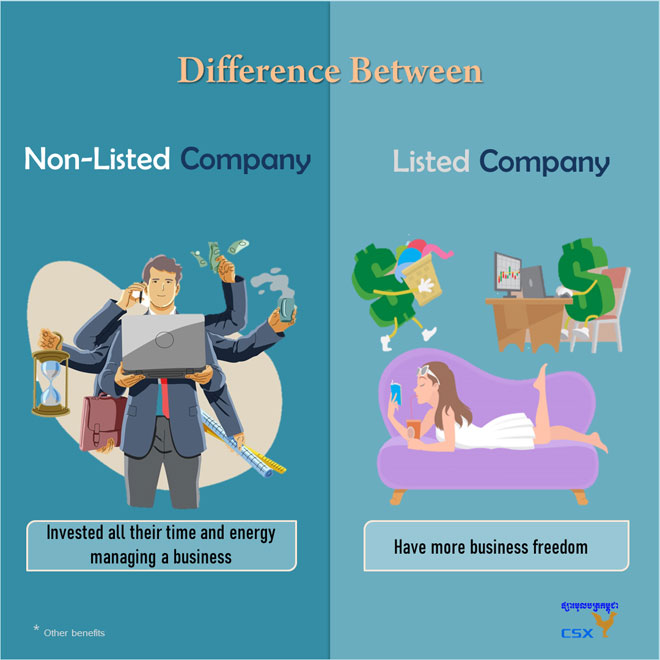
The listing of DBD Engineering PLC on the CSX Growth Board in September last year, witnessed by Ministry of Economy and Finance secretary of state HE Dr Hean Sahib (third right), who is also chairman of the Cambodian stock exchange. SUPPLIED
A business owner may consider an exit scenario when the company reaches a certain growth stage – when it becomes too big to manage, for example – or when the founder decides to abandon the business for good.
An exit strategy should bring optimum results for the owner and therefore a carefully calculated plan has to be executed to unlock the value of the company.
Exit strategies come in several forms – selling to a strategic buyer, a merger and acquisition (M&A) or the issuing of an IPO.
The last two exercises are commonly selected by companies or owners planning to exit their business in a profitable manner.
Merger and scquisition
An M&A is a buy-out of a company by selling partial or the entire stake to a bigger player, and a business owner can walk away with lots of cash by disposing of the stake.
However, an M&A is a complicated process. There are negotiations to be made between both parties to reach a contractual agreement that can be very time consuming, especially at the pricing stage.
Independent parties such as a lawyer, an accounting firm and a financial adviser need to be engaged, and the whole exercise can be a costly process.
An M&A exercise also entails lots of procedural and regulatory issues.

The handover of DBD Engineering’s listing certificate. SUPPLIED
For example, if there are only few companies in the sector, it may not be impossible for the deal to go through as it may be seen as anti-competitive.
Initial Public Offering
Another viable option for a business owner to exit a company is through an initial public offering (IPO).
Issuing shares to sell to the public may not sound appealing for the owner who wishes to exit the business immediately.
However, deciding to issue shares and list on the stock exchange means the company could, if necessary, have to go through some restructuring, or this may be required to ensure that the company is well run and has proper corporate governance compliance.
Once power isn’t concentrated only in the owner’s hands, the burden of running the business will be partially lifted.
The owner of a business that has a strong management system and a well-managed hierarchy can take some time off with peace of mind, knowing the company is run with a trusted system and structure.
Though the IPO process takes time, it gives the owner much more freedom to decide what percentage of stakes they wish to sell or how much money to raise for the business is needed.
The share price is usually calculated by underwriters based on business performance, future projection and market share.

An exit strategy is just as important as a company’s business vision. SUPPLIED
The owner can maintain a reasonable stake and work on a plan to completely exit the company slowly without jeopardising the business or the brand they created.
Should the owner want to retain some control of the company, they can, by remaining a shareholder or sitting on the board of directors, manage the company without spending too much time directly involved in its day-to-day running.
Overall, an IPO is seen as a very practical way for company owners to exit their business and retire early to enjoy the wealth they have created.
Business owners can start planning an exit at the early stages of the business.
With just $500,000 of shareholder equity, even smaller-sized companies can issue shares and list on the Growth Board of the Cambodia Securities Exchange (CSX).
Planning an exit early can result in a business owner having plenty of time to do something other than solely managing the business.
Contributed by: Listing and Disclosure Department
Email: [email protected]
Tel: 023 95 88 88/023 95 88 85
Disclaimer: This article has been compiled solely for informative and educational purposes. It is not intended to offer any recommendations or act as investment advice. The Cambodia Securities Exchange is not liable for any losses or damages caused by using it in such a way.









